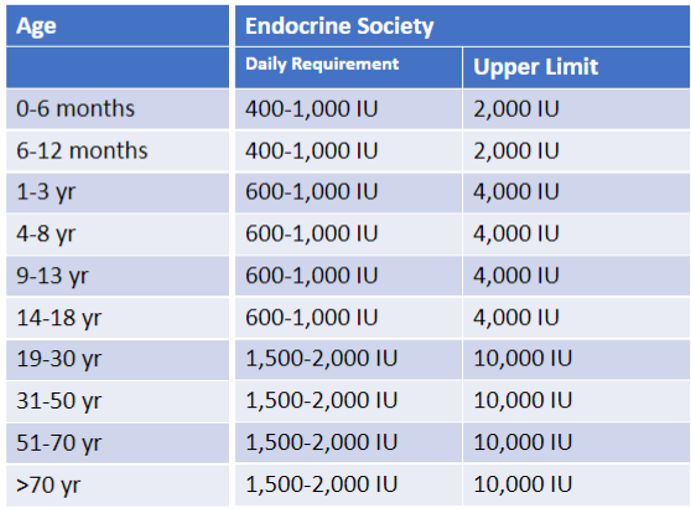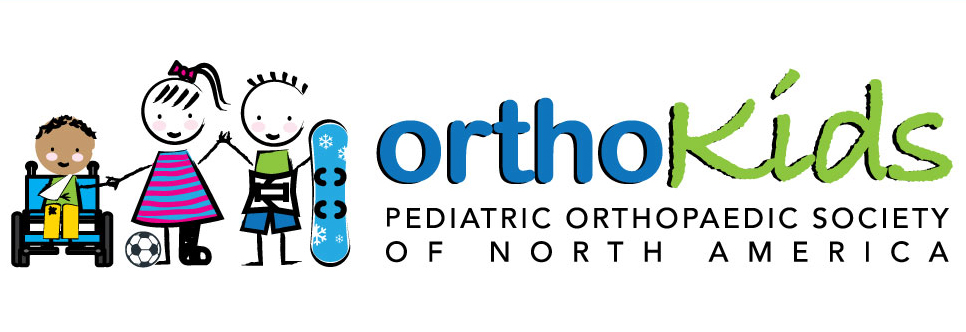Introduction
Vitamin D and calcium help children build strong bones. Without enough vitamin D to help move calcium into bone, only 10-15% of calcium from the diet can be used to build healthy bones. Problems with too little vitamin D include bones that break easily (brittle bones), bone pain, muscle pain, muscle weakness, as well as non-bone problems such as depression, developing autoimmune diseases, and increased risk for some cancers.
Vitamin D
Vitamin D is a very important vitamin for bone health. Vitamin D is like a taxi for calcium, making sure that calcium is transported to the bone. Your child’s body makes Vitamin D when sunlight meets the skin, but usually does not produce enough Vitamin D even if you live in a very sunny area. This happens when children spend too much time indoors, use lots of sunscreen, or wear clothing to protect their skin from the sun. The rest of the Vitamin D needed for bones must come from your child’s diet or a vitamin supplement. According to the National Health Institute, 70% of children and teenagers in the United States do not get enough vitamin D. Everyone is at risk for vitamin D deficiency, but some people may need more Vitamin D than others. This includes people with darker skin, people who live far away from the equator and get less sun, and those who are overweight.
Breast milk is very healthy for your baby, but it is not high in Vitamin D. Therefore, breast-fed babies need additional Vitamin D, given in the form of liquid vitamin D3 supplementation.
Vitamin D is easily purchased as a vitamin D3 supplement in stores. How much Vitamin D are you supposed to give your child in one day? The first thing to know is that Vitamin D is measured in “International Units”, which is shortened to “IU”. Current recommendations for Vitamin D according to the Endocrine Society are listed below:

For children eating regular food, there is still a risk of your child not receiving enough Vitamin D because most foods, even those with added vitamin D, do not provide enough Vitamin D needed by the body. Therefore, many children need to supplement their diet with Vitamin D3 as advised by the pediatrician.
| Vitamin D blood Levels (measured in ng/mL) | |
| Deficiency | ≤20 |
| Insufficiency | 21-29 |
| Optimal/Sufficiency | ≥30 |
Recommended Vitamin D levels should be between 40 – 60 ng/mL as defined by the Endocrine Society.
View the Vitamin D Brochure
Calcium
It is impossible to talk about Vitamin D without also talking about a very important mineral in your body called calcium. 99% of the calcium in your body lives inside of your bones and teeth. Calcium is very important to bone health. If your child does not eat enough calcium rich food or take supplements, then their bones might break or fracture more easily than children who drink lots of milk or eat food with lots of calcium. More importantly, if your child gets the right amount of calcium throughout childhood, they will have stronger bones as an adult.
You can make sure your child has strong bones by keeping them active through play and exercise. You can also get more calcium in your child’s body by feeding them food with lots of calcium. Below is a table showing how much calcium your child should be receiving every day and another one showing how much calcium is found in different foods. Calcium is measured in “milligrams” which is abbreviated to “mg”.
| Age | Recommended Daily Calcium Intake |
| Birth to 6 months | 200 mg |
| 6 months to 12 months | 260 mg |
| 1 year to 3 years | 700 mg |
| 4 years to 8 years | 1,000 mg |
| 9 years to 18 years | 1,300 mg |
Based on the 2011 Institute of Medicine (IOM) Report

Remember, if your child receives the recommended amount of Vitamin D and calcium, you are making sure their bones will be strong enough to last them well into adulthood!
Page QR Code:

References
- Holick MF, Binkley NC, Bischoff-Ferrari HA, et al. Evaluation, treatment, and prevention of vitamin D deficiency: an Endocrine Society clinical practice guideline. J Clin Endocrinol Metab. Jul 2011;96(7):1911-30. doi:10.1210/jc.2011-0385
- Kumar J, Muntner P, Kaskel FJ, Hailpern SM, Melamed ML. Prevalence and associations of 25-hydroxyvitamin D deficiency in US children: NHANES 2001-2004. Pediatrics. Sep 2009;124(3):e362-70. doi:10.1542/peds.2009-0051
- Ekwaru JP, Zwicker JD, Holick MF, Giovannucci E, Veugelers PJ. The importance of body weight for the dose response relationship of oral vitamin D supplementation and serum 25-hydroxyvitamin D in healthy volunteers. PLoS One. 2014;9(11):e111265.



 POSNA.org
POSNA.org